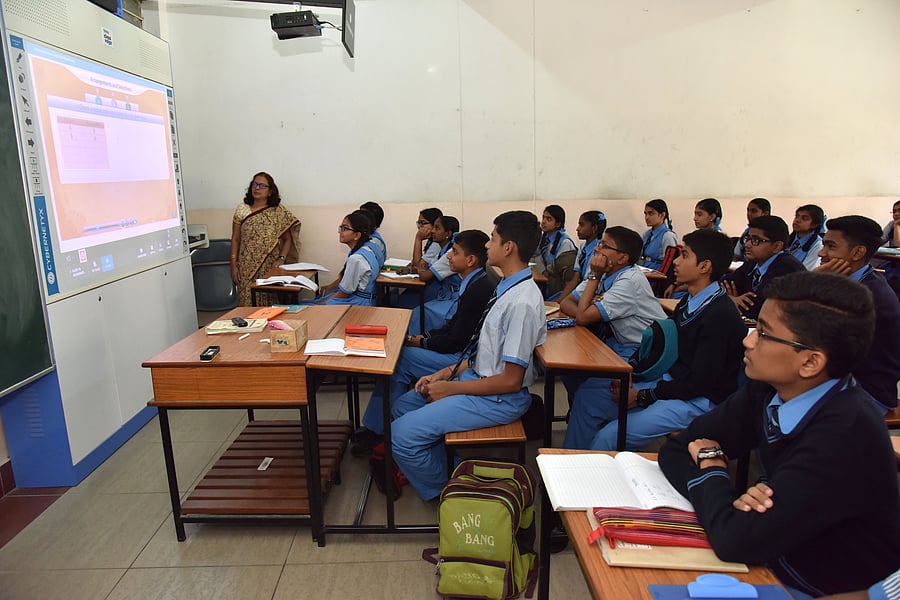
As schools reopen, teachers find themselves with a new batch of children who have to be assigned particular places to sit. Every classroom has children who need the teacher most and those who are capable of functioning independently with minimum instruction. A child who is distracted may need several more reminders from the teacher than a child who doesn’t get distracted. Such a child should ideally be seated near the teacher’s desk. Similarly, a highly energetic child who keeps running out of the class may need to be placed as far away from the exit as possible.
Traditional methods of seating children follow either heightwise arrangement or alphabetical order, usually in rows and column. However, current emphasis is on enhancing learning, sensory experience, discipline, behaviour as well as building team spirit. How does one achieve all of these simultaneously? Here are some aspects that teachers can take into account to ensure this:
Pulse and trend
In the first few days, teachers could allow children to choose their places. The teacher can then make notes based on observations such as who pairs up with who, who moves around constantly, who is distracted, who is part of which group, etc. This data is very valuable for the rest of the year as it is the basis for the seating plan of the classroom.
In these initial days, one can estimate the noise level to be anticipated in the days to come. Noise level again can be amazingly altered by adjusting seating locations of certain children such as pairing a talkative child with a quiet child. The teachers should encourage children to develop good classroom behaviour by explicitly explaining the dos and don’ts such as ‘don’t talk while the teacher is talking’, ‘whisper if at all you need to say anything’,
etc.
Planned seating
The front and following rows should be rotated among children who need the instruction and eye contact of the teacher the most. An experienced teacher can, within a few days, identify children who are overly talkative, distracted, inattentive, slower than others to complete tasks, fidgety, introverted, etc.
Behaviour often reflects either personality or ability. Disruptive behaviour could stem from either personal factors like low self-esteem or as a secondary factor of learning problems. The task of the teacher is to identify those children who may have learning difficulties as they will need regular assistance and follow up. If they are seated in positions accessible to the teacher, it will reduce stress for both the student and the teacher. On the other hand, task completion is a challenge for children who are talkative or distracted as they are unable to complete their work independently. Constant eye contact and reminders can help them get along with their work, thereby reducing behavioural issues.
Then there are children who do not have any learning problem but may have or tend towards mild behavioural issues, such as inability to sit still, being uncooperative, being overly fearful or emotional, that are not conducive to the learning environment. Children who exhibit such symptoms should not be allotted seats towards the back of the class as they will regularly need the teacher to address their behaviour. Classroom counselling moments are inevitable but this should preferably be kept to a minimum so that academic goals remain the focus.
Differentiated teaching can help teachers meet the various learning needs of students. In this method, the same content is taught in different ways and at different levels so that all students benefit. Teaching may include visual, auditory and activity-based methods to ensure that children can absorb the way they prefer. Research shows that differentiated instruction is highly effective and there are fewer discipline problems since children are occupied at their comfort level.
Children who need mild monitoring but who can function quite independently can be interspersed in the middle rows along with academically strong students. They benefit from teacher instruction and are understood to be at the instructional level of learning rather than at an independent level.
All children who are disruptive should not be clustered together. Consider spreading them across the classroom and pairing them with those who are focussed and undisturbed. This can ensure that the classes are uninterrupted for some time, and reduce distracting behaviour.
Interestingly, many teachers tend to seat good students upfront and relegate back rows to those who are unmotivated and distracted. Students who are anyway going to complete their work, who don’t get distracted, and those who are always ready to answer questions can do so from wherever they are sitting. Hence, there is no need to seat them upfront. They should be distributed suitably, and perhaps paired for certain tasks.
Peer to peer tutoring is beneficial if a high performing student is seated next to an average or below average student, or a quiet student is placed next to a talkative student. This is a flexible strategy that benefits both students and teachers. Easy teacher movement through the class will make students attentive.
Other factors to consider
There will always be distracting elements during classroom instruction so it is important to identify possible distractions. For example, children walking to the dustbin and back can be distracting, as is using a pencil sharpener. Perhaps placing the bin in a location that is out of sight like the back of the class or next to the teacher might help.
Though a teacher has no choice regarding class strength, adjustments in seating and choice of seating arrangement reveals the teacher’s teaching philosophy. This can influence student participation and lead to a better academic performance. So, it is important that teachers choose something that works for them and their students at that particular point in time.